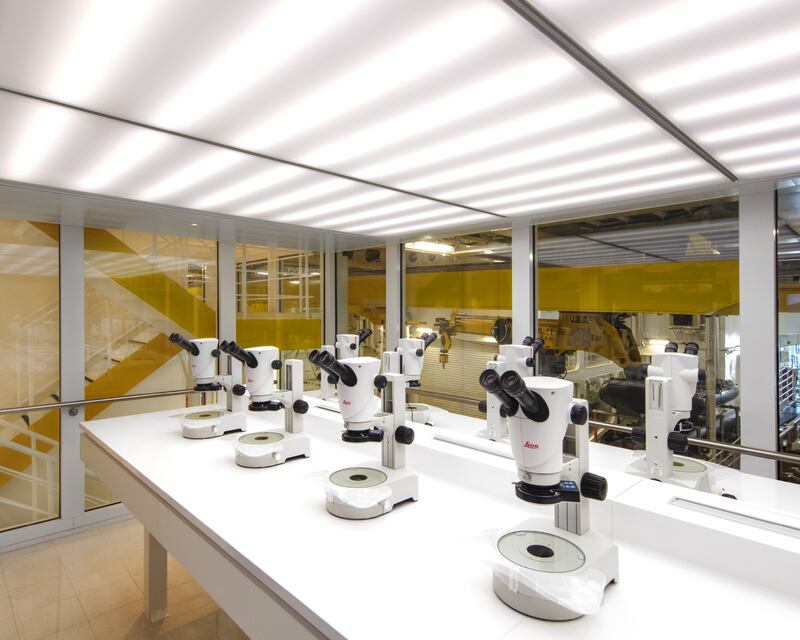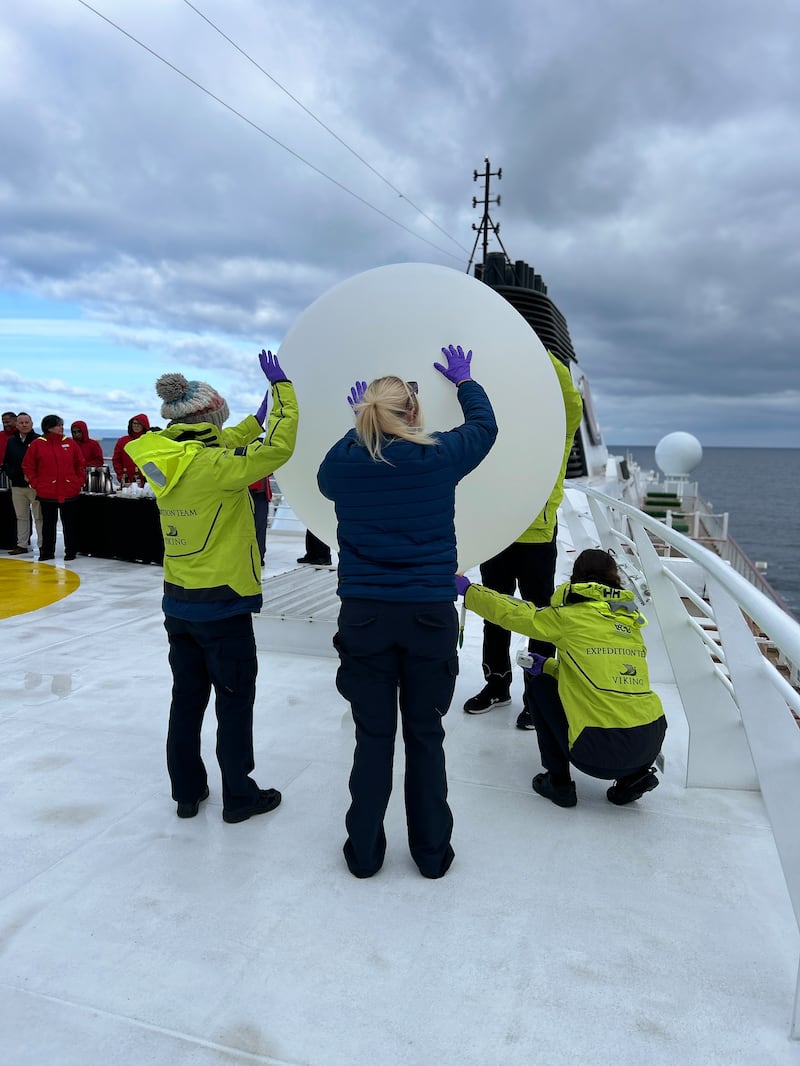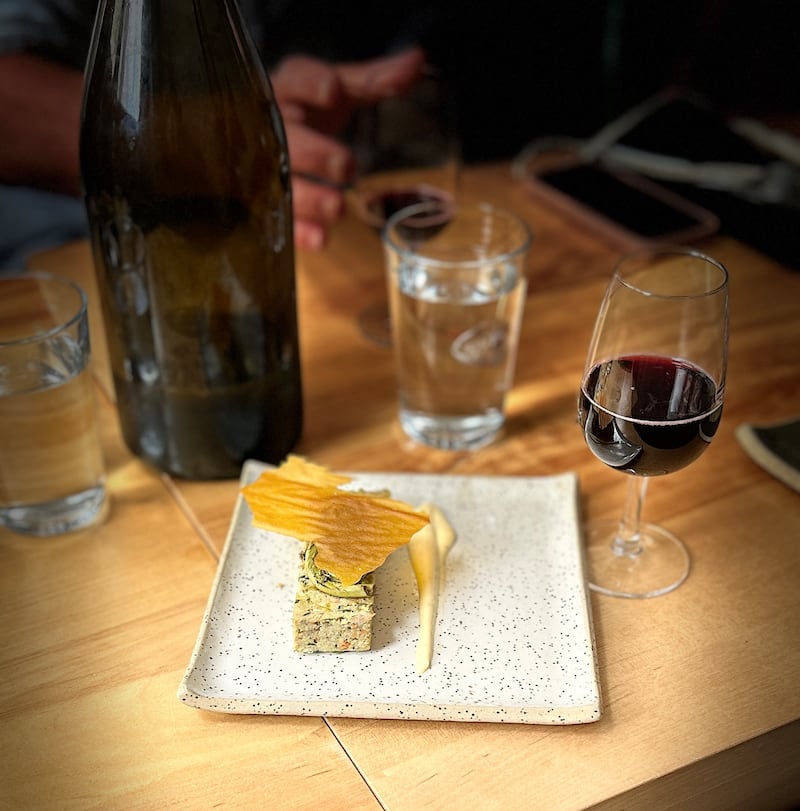As our ship makes its way from Pole to Pole, it quietly trawls the seabed for phytoplankton, sampling as it goes. A Viking Explorer trip, taking in destinations including Toronto, Quebec City, Saguenay, Charlottetown, Halifax and New York city on the Canadian Discovery Cruise, is clearly not like most other cruises you may have experienced. In fact, think about a cruise and your imagination may not encompass hanging out with an ornithologist discussing the finer features of kittiwakes and sea eagles. Your vision may not include high-grade binoculars to help with your whale-spotting activities, or a fully kitted out science lab, special ops boats and submarines, but on the Viking Polaris we discover all this and more.
That “more” includes expertly made martinis, excellent food, libraries of brilliant books, board games, jigsaws, tours and evening entertainment; so you get all the cruise comforts, but with a whole extra dimension. You could actually take an entire trip without going to meet chief scientist Meghan Goggins in her well-equipped lair. Plenty do, opting instead for art classes, spa sessions, music and any number of wonderful excursions at port, but I am intrigued and I want to learn more.

Many cruise lines are getting on the citizen science bandwagon but, currently, Viking, and French cruise company Ponant are the only two with serious science labs on board, and as Goggins tells me, the Viking Explorer itineraries are an absolute boon for research scientists. We have joined in Toronto, Canada but as the Polaris is on a Pole-to-Pole adventure (with a few scenic loops en route), it offers an ideal opportunity to take long-range samples and soundings. Partnerships with institutions including Cornell and Cambridge Universities, and the Norwegian Polar Institute mean the data gathered feeds back vital information, while we benefit from absorbing expert talks in the process.

This is most immediately obvious the morning we launch a weather balloon. Mugs of hot chocolate, with an optional shot of something stronger are served as we count down to the release. It is a surprisingly moving moment, and, as an avid fan of weather forecasts, I am even more delighted to join a group later on as we talk through the findings, sent back down from the stratosphere.
RM Block
The whole trip ends up offering a series of unexpected and fascinating experiences. They are unexpected in that our route, which takes us up the St Lawrence River to Nova Scotia, calls in at spots that are both remote and wonderful, and way off the usual beaten tourist tracks. Our visits are fleeting, and journeying on a ship designed to cut through polar ice lends an extra sense of adventure to the days. The trip profile is reflected in our fellow passengers: in this part of the world, these are predominately American, although there are a total of 52 nationalities on board. Viking cruises are over-18s only, and the Polaris sleeps a maximum of just 378 guests. I meet intrepid couples, extended grown-up families and plenty of retirees, whose career profiles include naturalists, photographers, scientists and surgeons. It makes for great cocktail-hour conversations, and also stiff competition in the afternoon quizzes.
I spend time on deck, well wrapped up, as we sail the Saguenay Fjord. Birds dance on currents of air over frozen waterfalls, and it soon begins to feel meditative, like a real, live-action relaxation tape. Our eyes are peeled for whales: beluga and minke; and dolphins too, and there is always a member of the crew on hand to help us identify our sightings. As time passes, I realise the more exciting sea creatures tend to be most likely to appear when I go below deck, and so, for the good of the ship-board whale-watching community, I decide to retire early to the bar. As this also has great views (as well as cocktails and mellow jazz), I don’t feel it to be too much of a sacrifice.

As our journey progresses, I start to wonder whether I prefer the sea days or the land days. I certainly relish the calmingly Scandi-Luxe surrounds of my stateroom, opening my balcony window on warmer nights to wonder at the depth of the starry skies. Ashore in Charlottetown, it is intriguing to find a sign in Irish: in the 1830s, Ballina-born Edward Whelan settled in this part of the world, going on to become one of the founders of the Canadian Confederation. There are small communities and islands in these parts where strong Irish accents can still be heard, evidence of the isolation experienced by early settlers. This is balanced by our visits to First Nation areas, such as the Huron-Wendat village outside Quebec, where our local guide explains how colonialism interrupted the older stories of his people, and I realise that all of human history is a story of migration and settlement. The lucky travellers were those who were welcomed, although it is clear from the stories we hear that the welcomers did not always have such similar luck.
[ The most Irish island in the worldOpens in new window ]
In Quebec, the site of the Montmorency Falls – higher than Niagra – I also dust down my rusty French and get a lesson in the travails of the Acadian settlers, ultimately exiled to New Orleans and bringing what would blend to become Cajun culture with them. At Trois-Rivières, a culinary tour introduces us to the distinctively delicious taste of fiddlehead ferns and, later on, a selection of excellent tequilas. There is kayaking, expert-led nature walks, wild blueberry and gin tasting, a brush with blueberry pasta (less weird than it sounds), and a hike at Pennant Point outside Halifax, where I am blown away by the pristine beauty.

A welcome feature of the trip is that there is always at least one excursion option included in your fare, so you can budget – and enjoy accordingly. If you are more independently minded, research in advance and discover which ports are also easily explorable under your own steam. On this itinerary, Prince Edward Island’s Charlottetown makes for a lovely wander, and has an excellent art museum where I chat with friendly locals who seem delighted I have travelled so far. “We have an Irish girl here,” I hear them calling to a new arrival, pointing me out in an upper gallery.
That afternoon, we take in the homestead of Lucy Maud Montgomery, author of the Anne of Green Gables stories. It is the 150th anniversary of Montgomery’s birthday this November, and those so inclined purchase rather alarming “Anne” fridge magnets in the gift shop. Farther north again, Halifax is of interest to anyone fascinated by the Titanic story, as it was from here that rescue boats were launched, and where the grim recovery operation was conducted. There is emotion in our guide’s voice as she recounts the past.
Coming towards the end of our trip, we loop back down the Atlantic coast, as the Polaris itinerary includes taking time to wait for the ice to be right to go farther north still. If you have in the region of €90,000 at your disposal, you can cruise with Viking from Pole to Pole, a journey of almost three months. Those who have done so, or who have taken the Antarctic leg, are keen to recount tales of icebergs, whales and penguins, but I find their words and pictures, astonishing as they are, distract me from revelling in the wildlife and wonders of where I am right now. And it is a remarkable now, albeit in a more low-key way.
On our final morning, this changes as we get up early to witness the ship glide into Manhattan as dawn breaks. Mists are rising as the Statue of Liberty comes into view, and sunrise gleams off the city’s iconic skyscrapers. It is testament to all we have seen and done on the journey that, unbelievably wonderful as this is, it is not actually my take-home moment. Instead, the trip has left me with a lingering sense of discovery and wonder that feels all the more precious than any single iconic photo opportunity. I’m sure there must be a scientific explanation for that.
Getting there
Gemma Tipton was a guest of Viking on the Canadian Discovery Cruise, taking in Toronto, Trois-Rivières, Quebec City, Saguenay, Sept-Îles, Cap-aux-Meules, Charlottetown, Halifax and New York city. From £7,695pps for an April 11th-23rd, 2025, sailing. Includes return flights from London, in-destination transfers and 12 nights in a Nordic Balcony Stateroom, plus all on-board meals, including wine, beer and soft drinks with meals, plus selected excursions, talks, entertainment, wifi and gratuities. Bookings at viking.com. You will need a Canadian eTA, available online at canada.ca at a cost of CAD $7; and a US Esta for entry to New York, at a cost of US $21.
What to bring
Plan to wrap up warm, and bring clothes for warmer days at the start and finish of your trip. Temperatures can go from the 20s in Toronto and Manhattan, to -9 further north. There are no formal nights on board, and most guests spend their day in variations on the athleisure wear / jeans look. Evenings are upped to elegant causal, ie dresses and skirts, smart trousers and shirts. You’ll also need walking shoes and swimming togs. Plug sockets are European two-pin, US flat-pin and USB.





















